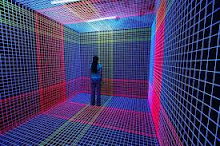 clever use of balloon technology hydrogen design and may be metal rubber one can have components that can explore the universe why yes silent little probes that can fly here are impression's of these on art view. If you thought propelling a craft into space would cost millions of pounds, then think again. These amazing images were taken by Cambridge University students who sent a camera close to the edge of space for less than £1,000. The group attached a tiny camera to a helium balloon, which rose to 32km (20miles) – or nearly four times the height of Everest.During the three-hour flight the camera took 800 images showing the Earth's curvature.When the balloon burst, the camera parachuted back to safety, landing in a field 7km (4miles) north of Bury St Edmunds in Suffolk.
clever use of balloon technology hydrogen design and may be metal rubber one can have components that can explore the universe why yes silent little probes that can fly here are impression's of these on art view. If you thought propelling a craft into space would cost millions of pounds, then think again. These amazing images were taken by Cambridge University students who sent a camera close to the edge of space for less than £1,000. The group attached a tiny camera to a helium balloon, which rose to 32km (20miles) – or nearly four times the height of Everest.During the three-hour flight the camera took 800 images showing the Earth's curvature.When the balloon burst, the camera parachuted back to safety, landing in a field 7km (4miles) north of Bury St Edmunds in Suffolk.
Voyager hurtled true the solar wind with interstellar winds in the heliosheath. Having traveled more than 21 billion kilometers on its winding path through the planets toward interstellar space, the spacecraft is now nearly 14 billion kilometers from the sun. Traveling at the speed of light, a signal from the ground takes about 12.8 hours to reach the spacecraft. Voyager 1 reached this milestone on July 13 after having traveled more than 22 billion kilometers true space.
 At the start of the VIM, the two Voyager spacecraft had been in flight for over 12 years having been launched in August (Voyager 2) and September (Voyager 1), "1977". Voyager 1 was at a distance of approximately 40 AU (Astronomical Unit - mean distance of Earth from the Sun, 150 million kilometers) from the Sun, and Voyager 2 was at a distance of approximately 31 AU.
At the start of the VIM, the two Voyager spacecraft had been in flight for over 12 years having been launched in August (Voyager 2) and September (Voyager 1), "1977". Voyager 1 was at a distance of approximately 40 AU (Astronomical Unit - mean distance of Earth from the Sun, 150 million kilometers) from the Sun, and Voyager 2 was at a distance of approximately 31 AU.



